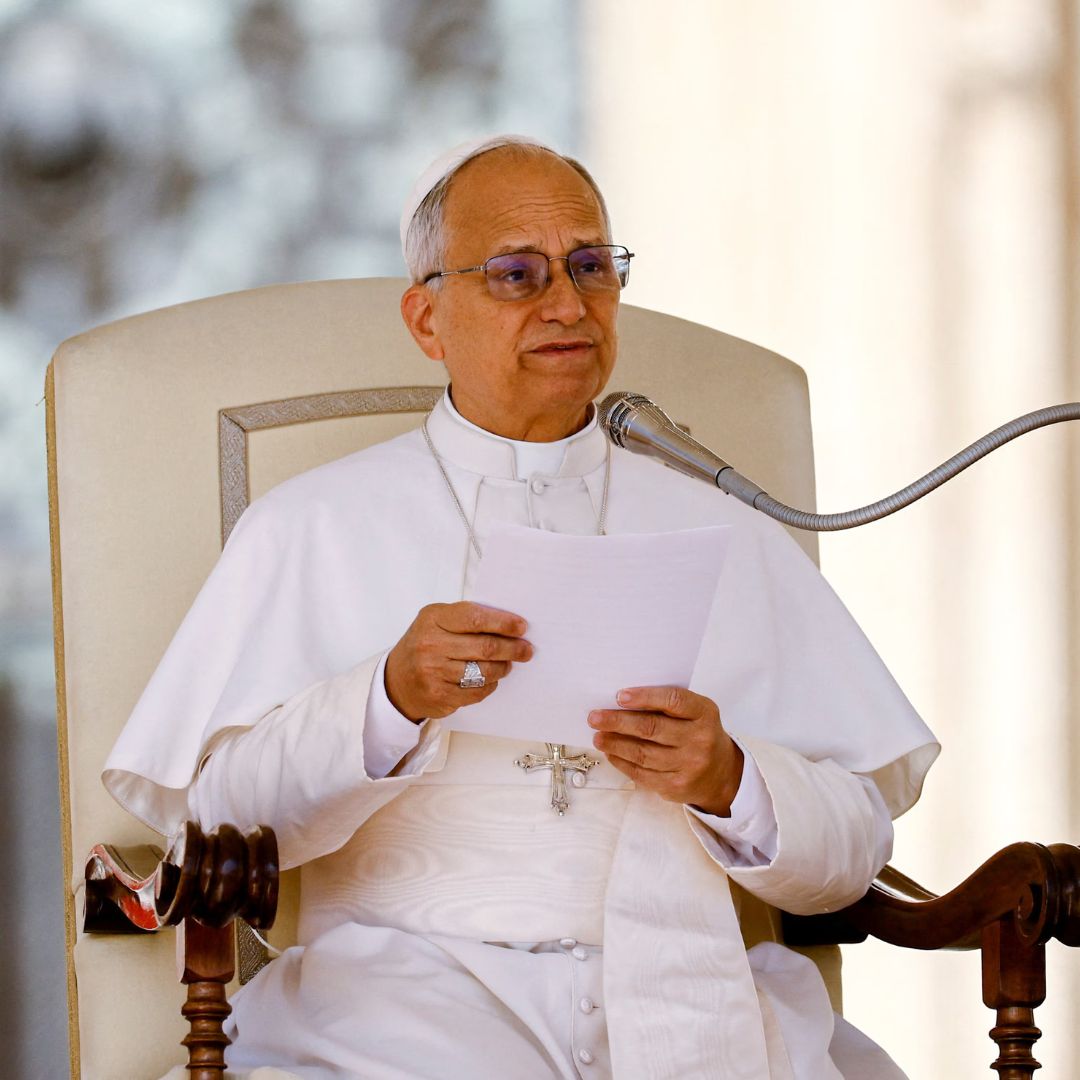
Introductory Commentary From Vicki Yamasaki
In this penetrating critique of Pope Leo XIV’s apostolic exhortation Dilexi Te, Professor Timothy J.A. O’Donnell warns that the document signals a troubling theological shift. From a traditional Catholic vantage, Dilexi Te moves the Church’s center of gravity—from Divine Revelation to social engagement, from the supernatural to the sociological, and from Sacred Doctrine to sentiment. O’Donnell contends that this shift risks promoting a moralism divorced from conversion and Christ-centered theology, echoing Benedict XVI’s warning against efforts to “save the world by its own effort.”
The exhortation’s heavy emphasis on structural injustice and economic exclusion, O’Donnell argues, veers dangerously close to Marxist analysis. By adopting language such as “structures of exclusion” and “systems that kill,” Dilexi Te risks reframing the Church’s mission in terms of class struggle and material liberation, rather than salvation and sanctification. As O’Donnell puts it, the document “echoes liberationist language… without the careful metaphysical distinctions that protected earlier papal teaching from Marxist or materialist interpretations.” This rhetorical shift, he warns, could recast the Church as a political or ideological movement rather than a sacramental and truth-bearing body.
Most provocatively, Dilexi Te urges that the Church be “shaped by the poor,” a phrase O’Donnell sees as an ecclesiological inversion that subordinates doctrine to sociological categories. If the Church’s identity is redefined by social service rather than divine worship, it risks becoming a secular NGO—an organization driven by empathy and activism, but untethered from its supernatural mission to save souls. The critique underscores that true Christian charity must be ordered toward eternal salvation, not merely temporal relief.
Ultimately, O’Donnell calls for a reintegration of caritas and veritas—charity with truth, mercy with conversion, and service with worship. Without this doctrinal anchor, he warns, the Church’s witness may devolve into sentimental activism, losing its evangelical power and theological integrity.

From Altar to Activism: The Church’s Drift Toward NGO Theology
Introduction
When Pope Leo XIV released his first apostolic exhortation Dilexi Te (“I Have Loved You”), it was greeted with enthusiasm across much of the Catholic world. Written in the pastoral style of his predecessor, it calls the Church to renew her love for the poor, to reject indifference, and to embody mercy in concrete social witness. The document’s warmth, its biblical cadence, and its appeal to conscience are unmistakable. It speaks to a wounded and weary world in language that is simple, compassionate, and accessible—qualities that many find refreshing after decades of theological polarization.
Yet for those rooted in the tradition of perennial Catholic teaching, Dilexi Te also raises serious questions. Beneath its lyrical calls to solidarity lies an uneasy theological shift: from the primacy of Divine Revelation to the primacy of social engagement, from the Supernatural to the sociological, from Sacred Doctrine to sentiment. It risks advancing what Benedict XVI once described as “a moralism that seeks to save the world by its own effort,” where compassion becomes detached from conversion and charity is stripped of its Christological core.
This essay does not deny the noble intentions or pastoral sensitivity of the Holy Father. Rather, it seeks to engage Dilexi Te critically, through the lens of traditional Catholic theology and the social encyclicals that preceded it—from Rerum Novarum to Quadragesimo Anno and Caritas in Veritate. Its purpose is not to condemn but to clarify: to discern where continuity with the Church’s doctrinal patrimony is maintained, and where ambiguity clouds the supernatural horizon. For a Church that truly loves the poor must also love the Truth, for only truth can make charity Divine.
- Doctrinal Emphasis and the Risk of Moral Reductionism
Pope Leo XIV’s Dilexi Te rightly affirms the inseparability of faith and charity, echoing St. James’s teaching that “faith without works is dead.” Yet from a traditional standpoint, the exhortation’s sustained focus on social and economic dimensions of love risks collapsing supernatural charity into humanitarian benevolence.
By framing the love of the poor as “the measure of our love for Christ,” Leo appears to invert the theological order: love for God, expressed in worship and fidelity to revealed truth, precedes and informs love for neighbor. The exhortation’s rhetoric often suggests that God is most encountered in the poor rather than through them — a subtle but significant shift that can blur the distinction between divine worship and social activism.
Traditional theology, from Aquinas to Pius XII, teaches that the virtue of religion — adoration of God as Creator and Redeemer — is the foundation of all moral life. Dilexi Te, while quoting Scripture copiously, gives far less space to the most Holy Eucharist, sin, repentance, and the supernatural destiny of the soul than to sociological themes. This imbalance risks fostering what Benedict XVI called “a moralism that seeks to save the world by its own effort.”
- Continuity or Rupture with the Tradition of Catholic Social Teaching
Leo situates himself within the lineage of papal concern for the poor — from Rerum Novarum (Leo XIII) through Evangelii Gaudium (Francis). Yet the conservative critique notes a continuing shift from principles of Natural Law and subsidiarity toward emotive appeals and structural analyses of poverty.
Classic Catholic social doctrine grounds economic justice in the Natural Moral Law, private property, and the common good. Leo’s document, however, echoes liberationist language about “structures of exclusion” and “systems that kill,” without the careful metaphysical distinctions that protected earlier papal teaching from Marxist or materialist interpretations. In this way, Dilexi Te risks being read as a social manifesto rather than a theological exhortation — more prophetic than doctrinal, more pastoral than metaphysical.
- The “Preferential Option for the Poor” as Ecclesial Paradigm
While the “option for the poor” is firmly rooted in the Holy Gospel, Dilexi Te extends it to become the defining hermeneutic of the Church herself, urging that “the Church must not only serve the poor but be shaped by them.”
A traditional reading would caution that this ecclesiological inversion risks subordinating the deposit of faith to sociological categories. The Church’s form comes from Christ and the Holy Sacraments, not from any social class or condition. To be “shaped by the poor” cannot mean reshaping Sacred doctrine, Divine Liturgy, or church discipline to fit contemporary sentiments. Charity to the poor flows from the Church’s holiness; it cannot constitute it.
Saint Thomas and the Fathers insist that the corporal works of mercy must always remain ordered to the salvation of souls, not merely to temporal relief. A Church defined primarily by social service risks becoming another NGO, i.e., Holy Mother Church’s supernatural mission becomes compromised and reduced to a mere secular mutual aid agency.
- Ambiguities in the Theology of Encounter
Leo repeatedly states that “in the poor, Christ continues to speak to us.” While the mystical intuition is sound — recalling Matthew 25 — a traditional theologian might note that it can be misread as a new anthropology of grace wherein the divine presence is conflated with human suffering as such.
Grace, according to Catholic doctrine, is not automatically present in material poverty or social marginalization. The poor are beloved of God, but poverty itself does not sanctify; only the Holy Catholic Faith, holy Baptism, and virtue do. By romanticizing the poor, the Church risks sentimentalizing both sin and redemption. True Christian love requires conversion, not mere proximity.
- Silence on the Hierarchy of Truths
Unlike earlier magisterial documents that integrated the supernatural order (Heaven, Hell, Salvation, and Divine Law), Dilexi Te largely omits explicit reference to Eschatology, Divine Judgment, or the need for repentance. The traditional critique views this as a pastoral tone divorced from the full realism of the Holy Gospel.
Love for the poor is indispensable, but it must never overshadow the greater Commandment: to love God “with all your heart, soul, and mind.” When care for the poor is presented apart from doctrinal fidelity, moral absolutes, and liturgical worship, the faith risks being reduced to an ethic of empathy rather than a supernatural call to holiness.
- The Continuity of Intent and the Problem of Ambiguity
Leo XIV clearly seeks to continue Pope Francis’s pastoral approach while softening ideological edges. Yet this very continuity — the language of “inclusion,” “listening,” and “encounter” — perpetuates a post-conciliar ambiguity in which evangelization is often reduced to dialogue and social accompaniment rather than proclamation of the Holy Gospel and the call to conversion.
Traditionalists would urge that the Church’s credibility among the poor depends not on abandoning doctrinal clarity but on living the truth without compromise. The saints who most loved the poor — Francis of Assisi, Vincent de Paul, Mother Teresa — never divorced their charity from catechesis, asceticism, and adoring the most blessed Sacrament of the Altar.
- Key Summary of the Critique
|
Positive Aspects |
Concerns / Weaknesses |
|
Strong biblical and pastoral appeal to love the poor |
Underemphasis on holy doctrine, sin, and salvation |
|
Continuity with Franciscan simplicity |
Tendency toward sociological language |
|
Affirms the dignity of the marginalized |
Risks reducing the supernatural to the social |
|
Promotes reform and missionary zeal |
Weak articulation of hierarchy of Truths |
|
Challenges indifference and materialism |
Ambiguous ecclesiology: Church ‘shaped by the poor’ |
- Conclusion: A Call for Integration, not Replacement
From a conservative Catholic standpoint, Dilexi Te offers genuine inspiration but incomplete theology. Its compassion is admirable; its omissions are concerning. A truly Catholic vision of love for the poor must integrate caritas with veritas — Charity with Truth, Divine Mercy with conversion, service with worship in Spirit and truth.
Without that balance, the Church’s social mission risks drifting into moral sentimentalism, leaving the faithful with activism rather than adoration, and empathy without evangelization.
Endnotes
- St. James 2:17; see also Benedict XVI, Deus Caritas Est §28.
- Leo XIII, Rerum Novarum (1891); cf. Pius XI, Quadragesimo Anno (1931).
- Thomas Aquinas, Summa Theologiae II-II, q.81 a.1; cf. Pius XII, Mediator Dei (1947).
- Matthew 25:31–46; cf. Benedict XVI, Spe Salvi §38.
- Catechism of the Catholic Church §§2084–2097 on the virtue of religion.
- John Paul II, Veritatis Splendor §107; Benedict XVI, Caritas in Veritate §1; Mark 1:15.
- Conclusion. John 4:24
Source Note: This essay was composed with the assistance of ChatGPT (GPT‑5, OpenAI) for research and drafting support, under the author’s supervision.
*Kindly respect Timothy’s research and dedication to this piece, thank you.
